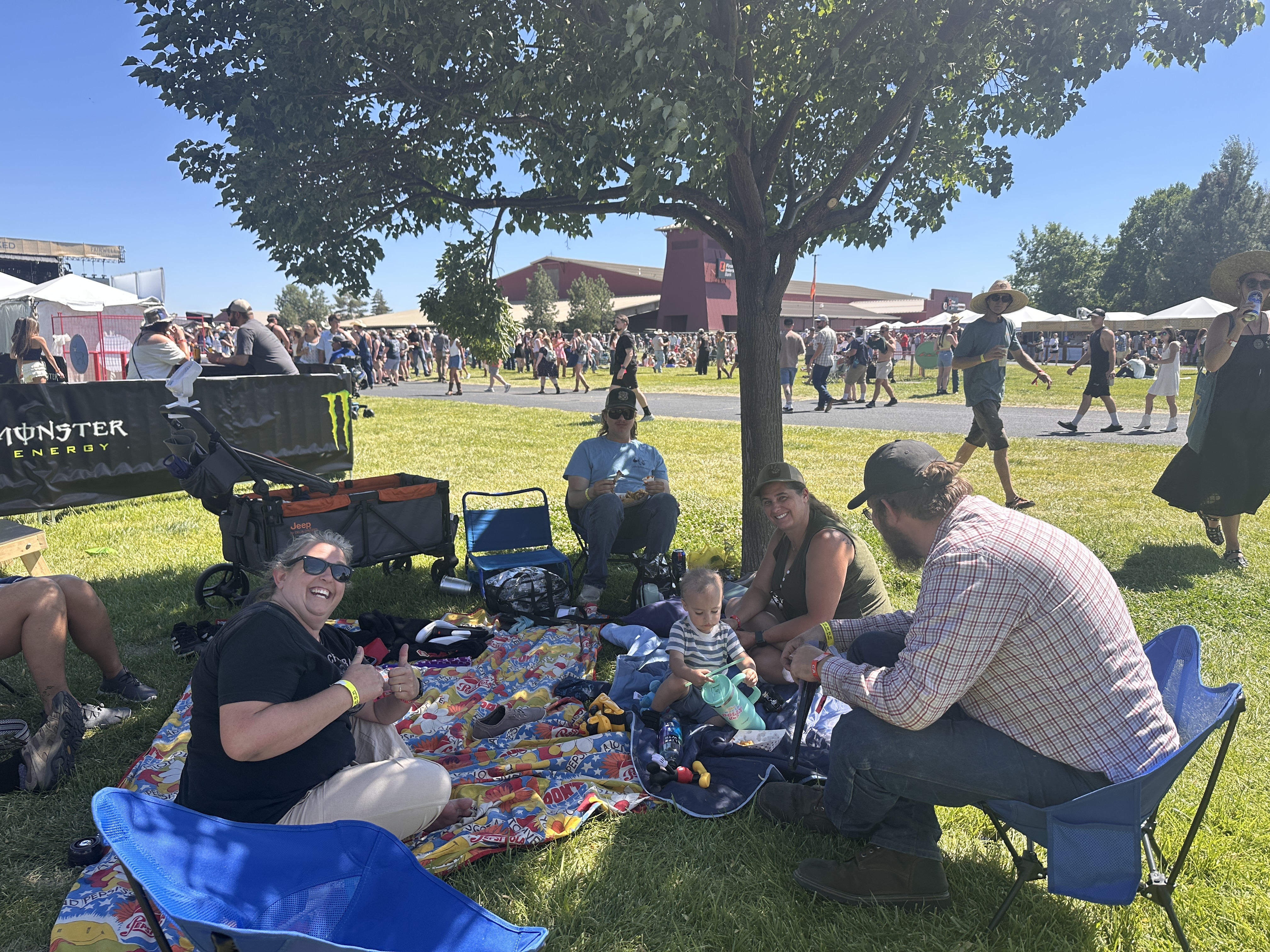Flashback: Drive-in theater site purchased in 1950; Juvenile delinquency doubles and could again in 1975; Grants seek millions for airport, fire house in 2000
Published 2:00 am Thursday, March 20, 2025

- Fences like this one around Evergreen Elementary School are one way school officials hope will make schools safer.
100 Years Ago
Trending
March 26, 1925 — From ‘Terrebonne’
Joe McClay sold his wood saw to John W. Rubow, who bought the Mrs. DeWitt Williams place on the Crooked River. He will use the engine to pump water from the river to irrigate a truck garden.
George MacGregor, Sam Ohles, Mark Dorn and Junior McClay dehorned 33 head of cattle one day last week.
Trending
Gladys Wimp has been quite ill with the flu.
Phil Dobson holds the records for all courses
Phil M. Dobson holds the course record for the Prineville course, the Deschutes course and is paired with Otto Houk for the Redmond course.
In a foursome on the Prineville links Sunday the local players, Dobson, Bartlett, L. Redifer and J.C. Redifer defeated the Prineville four, Price, Kringle, Rosenburg and Long by 57 strokes.
The boys say the Prineville course is the best in Central Oregon, it being on the fairgrounds and covered with grass.
75 Years Ago
March 23, 1950 — Terrebonne to construct new school
Terrebonne school district voters approved a $69,000 bond issue for a new school building at a special election Monday.
Of the 129 votes cast, 74 were favorable and 55 were opposed to the bond issue.
… Tentative plans for the new building call for six classrooms, a lunch room and a kitchen. A new gymnasium will not be necessary.
… The present Terrebonne grade school was built in 1912. The second story was left unfinished at the time, but two upstairs rooms were later completed to serve as classrooms. Five rooms are in use now.
Drive-in theater site purchased
A drive-in theater site for Redmond has been purchased by Milton L. Odem, it was announced this week.
The land, 12% acres south of Redmond, was bought from C.E. Smith. It is between the old and new highways.
50 Years Ago
March 26, 1975 — Juvenile delinquency doubles and could again
A 14-year-old boy who had his allowance cut off by his economically pinched family went out and burglarized a house in his own neighborhood. Another youth about the same age stole a $75 tape deck out of a car and sold it to “some older guy” for five dollars. Both boys admitted to needing just enough money to buy cigarettes or play pinball machines with that week.
Both were caught. According to statistics provided by the Deschutes County Juvenile Department, they were just two of the 1,517 juveniles in the county who were apprehended and dealt with in 1974.
That number represents a 200 per cent increase over the previous year and is expected to be only half of the 1975 total if county-wide juvenile delinquency continues to grow at its present rate.
In Redmond the same increases are reflected. According to Redmond Police Chief C.L. “Speed” Durgan, the increasing trend in juvenile crime can be statistically related to the economic situation. Worked out on a graph by the police chief, the incidence of juvenile delinquency began to rise at the same time the economic level began to fall. The worse the economy became, the higher the crime rate rose.
In an interview, a 16-year-old girl who was caught for shoplifting explained that she started “ripping things off” in order to maintain her own present standard of living even if her parents couldn’t.
If it wasn’t the lack of money promoting the teen-age “rip offs” and crime, it was boredom. These two reasons for juvenile delinquency, according to high school counselor Dalton Clark, are both related to the economy.
Most of the jobs, said the counselor, that were once available to high school age kids have been eliminated or filled by a man who needs the extra work to supplement his own “suddenly insufficient” income. This not only removes the chance for a youth to earn “a little spending money” but eliminates opportunities to make constructive use of free time.
This free time is often put to destructive use instead. Examples are numerous. A pair of high school students were held responsible for the morning and afternoon thefts of more than 10 cars in the Redmond area.
According to chief Durgan when asked why they did it, they answered “It was something to do.”
Another youth interviewed told of a night he and two companions were taken into custody and charged with minors in possession. Of the experience, he admitted not liking the taste of beer any better than the two boys he was with, “but,” he said, “it was better than sitting home and getting yelled at.”
Yet another incident involved three youths riding around with a carload of rocks throwing them randomly at windows with no apparent motive other than testing their aim and killing time.
Some of the teen-agers interviewed, many of whom had records of burglary, auto theft, check forgery, etc., had suggestions as to how to stem the tide of boredom.
One student, with just such a record of delinquency, hoped for the development of some kind of “different” after-school sports program. Developed not organized, he stressed. In organized sports, he claimed, “they look at your long hair and try to ride you right out of the program or cut your hair.” Another responded, “Just give us a football and let us do our own thing.” “We need more things to do that are free,” was the comment that led one young girl to suggest the building of some “decent” tennis courts or an ice skating rink.
25 Years Ago
March 23, 2000 — Grants seek millions for airport, fire house
The City of Redmond is seeking millions of dollars in federal appropriations through Oregon’s congressional delegation for airport improvements, a new fire station and a sewer extension east of town.
City Manager Joe Hannan said last week he had submitted four application letters to U.S. Sens. Ron Wyden and Gordon Smith, and U.S. Rep. Greg Walden seeking the money.
One of the requests is for $850,000 to pay for the design of a new ramp and taxiway and a terminal addition at Roberts Field. In addition, the city is asking for $5 million to build the concrete ramp, where airliners park to load and unload passengers.
While the ramp is a higher priority, according to Airport Manager Carrie Novick, it and the terminal expansion must be designed together to avoid complications later.
“The timeline for the ramp is as soon as we get the money.” Novick said.
She hopes the terminal expansion, which will cost $2.5 to $4 million, can be done in two to three years. The extension of Taxiway F will have to wait until later.
Wyden has sent a letter to FAA Administrator Jane Garvey asking for special consideration for Redmond because of its rapid growth. The airport has already reached the number of passengers and traffic that were expected in 2007, Novick said.
The city’s requests may not be too far-fetched. The House and Senate have both approved the $40 billion FAA reauthorization bill. That bill would send $1.3 million a year to Redmond for improvement projects.
Another airport-related request from the city is for $2 million to extend a 10-inch diameter sewer line east along Sisters Avenue to the US. Forest Service’s Redmond Fire Center. That facility currently uses a pair of lagoons on airport property to handle its sewage.
City officials hope to accomplish two things with that project. The first is to handle the fire center’s sewage and eliminate the ponds which could attract birds to the airport.
The second goal is to make the sewer line available to a 86-acre industrial park the city is planning along the north side of Roberts Field.
The other funding requests include one for $200,000 to design and another $1.1 to $1.5 million to build a larger city fire station.








